- News
- Reviews
- Bikes
- Components
- Bar tape & grips
- Bottom brackets
- Brake & gear cables
- Brake & STI levers
- Brake pads & spares
- Brakes
- Cassettes & freewheels
- Chains
- Chainsets & chainrings
- Derailleurs - front
- Derailleurs - rear
- Forks
- Gear levers & shifters
- Groupsets
- Handlebars & extensions
- Headsets
- Hubs
- Inner tubes
- Pedals
- Quick releases & skewers
- Saddles
- Seatposts
- Stems
- Wheels
- Tyres
- Tubeless valves
- Accessories
- Accessories - misc
- Computer mounts
- Bags
- Bar ends
- Bike bags & cases
- Bottle cages
- Bottles
- Cameras
- Car racks
- Child seats
- Computers
- Glasses
- GPS units
- Helmets
- Lights - front
- Lights - rear
- Lights - sets
- Locks
- Mirrors
- Mudguards
- Racks
- Pumps & CO2 inflators
- Puncture kits
- Reflectives
- Smart watches
- Stands and racks
- Trailers
- Clothing
- Health, fitness and nutrition
- Tools and workshop
- Miscellaneous
- Buyers Guides
- Features
- Forum
- Recommends
- Podcast
 fox_ax_-_7.jpg
fox_ax_-_7.jpg11 ways mountain bikes have influenced road bike tech and design
What has mountain biking ever done for the road bike? In terms of technology and design, quite a lot actually. Here are some key ways mountain bike design has influenced modern road bikes, from compact frame geometry to disc brakes.
1. Geometry and compact frame design
Perhaps the biggest thing that modern road bikes have borrowed from their mountain bike cousins has been in the geometry and shape of the frames, but far from being a recent influence, we have to go back to the 1990s when most road bikes came in a dozen sizes with high forward sloping top tubes. Giant Bicycles, led by designer Mike Burrows, challenged the status quo by bringing the compact frame design then common on mountain bikes to a road bike, with smaller front triangles and sloping top tubes. Benefits included a stiffer and lighter frameset and increased fit options despite a smaller range of sizes. It was dubbed TCR and these days the majority of road bikes can trace their DNA to this compact frame design approach.
While the geometry of most modern race bikes falls within a fairly small window of angles and measurements, modern mountain bike geometry has changed loads, generally getting longer and slacker to suit the more challenging terrain the bikes are being ridden on. One key change has been a move towards long front centres and shorter stems for more stable handling, and there’s evidence this idea is finding its way into road bikes, at least those designed for tackling more than just smooth tarmac.
Two brands - Merida and Whyte - have taken this idea and applied it to road bikes, with the Silex and Glencoe models respectively. Both are built around a short stem and wider handlebar for more leverage and control, handy when riding descents and off-road trails, but putting more length into the top tube to ensure an optimum reach for road riding comfort. We don’t expect this approach to become mainstream anytime soon, both bikes are aimed at the gravel and road plus riding styles, but it's getting people debating geometry and that can only bea good thing as the line between a road bike and mountain bike continues to blur.
2. Threadless headsets
Go back to when road bikes were made from spindly steel tubing, and you would find forks fixed into frames using a 1in fork steerer, threaded headset and quill stems. Early mountain bikes originally used all the technology then commonplace on road bikes including the threaded headset, but their limitations were quickly exposed on the demanding off-road trails these new bikes were being ridden on.
Developed by John Rader and produced by Dia-Compe as the Aheadset, this radical new system of attaching the stem to the outside of the steerer tube with easier bearing preload thanks to the star-fangled nut, was simpler, easier, quicker and lighter than the threaded headset. It wasn’t long before it became standard on all new mountain bikes, and was eventually adopted by the road bike industry and completely relegated the classic threaded headset and quill stem to the history bikes and retro bike events.
Along with this new threadless headset came an increase in steerer tube and head tube diameter. The early threadless designs moved up to the 1 1/8in standard, and more recently tapered head tubes, combining a wider lower bearing race diameter, have become popular on both mountain and road bikes in the pursuit of lower weight and increased stiffness.
- Everything you need to know about headsets
3. Disc brakes
This is an easy and obvious one. Mountain bike brakes have been through some serious developments over the years, from cantilevers when I first started mountain bike to V-brakes, a slight detour down U-brake alley, before disc brakes came to dominate. All mountain bikes, with the exception of some very bargain-priced bikes, now come with disc brakes and most are of the hydraulic variety, save for some entry-level models. There was some initial reaction to the introduction of disc brakes but it was short-lived with the benefits far outweigh any negatives.
Road cycling is a much more traditional and conservative sport and disc brakes are a polarising technology, but we're seeing more new road bikes being designed with disc brakes and there's evidence they are proving popular with consumers who like the improved braking performance. They're not without their problems though, being heavier than rim brakes, prone to squealing and more fiddly to install and setup, and of course you have to buy a new bike, wheels and brakes to upgrade.
- Everything you need to know about disc brakes
4. Thru-axles
The thru-axles, through-axle or bolt-thru axle, is an oversized axle system that was first developed in mountain biking when disc brakes were being introduced and have now been ported over to modern disc-equipped road bikes. Compared to skinny 9mm quick release skewers, thru-axles comprise a hollow oversized axle threading into a closed dropout. Chief benefits included extra stiffness and more secure wheel retention, but downsides involve having to completely remove the axle to release the wheel for slower wheel changes. Mountain bikes have settled on 12, 15 and 20mm axle diameters depending on the application, but after the early disc-equipped road bikes used 15mm axles, we’re now seeing 12mm become the standard on all new bikes.
5. Wide tyres
In the early days of road cycling, tyres were wide because the roads were rough, but as road surfaces improved tyres got narrower. The reverse is now happening, with road conditions deteriorating and wider tyres definitely back in fashion. So wide tyres have made a comeback on road bikes, and while this isn’t a trend that is directly inspired by mountain biking, that sport has also gone through considerable changes with tyres also getting wider than was common a decade ago, with 2.8, 3in and wider tyres being sold on recently designed mountain bikes. So wide tyres is a trend reflected on both sides of the fence.
- Trend spotting: Why you need to switch to wider tyres
6. Tubeless tyres
Everyone hates a flat tyre, and they are common on mountain bikes, from thorns to pinch flats. Tubeless technology was another key development that genuinely improved the enjoyment of mountain biking by virtually eliminating flat tyres, though they do still happen from time to time, but not with the same frequency they used to. Tubeless tyre technology, like disc brakes, have come a long way, with better compatibility between the many tyre and wheel brands. Road tubeless is slowly gaining ground in the road market with most modern wheels now tubeless compatible and a growing list of decent tubeless tyre options and great understanding of how to setup a tubeless tyre with liquid sealant, but it still faces hurdles, chiefly compatibility between different tyre and rim brands to ensure easy setup.
- Buyer's guide to tubeless tyres
7. 1x drivetrains
My first mountain bike had a triple chainset - today all my mountain bikes have single ring drivetrains. Ditching the front mech and going to a single ring crankset with a wide-range cassette has become hugely popular in mountain biking, with SRAM instrumental in making ditching the front mech much easier with its wide-range cassettes and clutch-style mechs (more on those later) designed to stop the chain dropping off. In porting this technology over to the road market SRAM has found instant appeal with the growing gravel and adventure bike market, where the simplicity and wide gearing range are big appeals, as well as cyclocross where the reduced mud clogging effects of removing the front mech not been lost on racers.
And it’s happening on road bikes. Both the Whyte Wessex One and the original version of the 3T Strada are designed entirely around a 1x drivetrain, there’s no way of fitting a front mech. The 3T Strada is even being raced in the professional peloton, though 3T later relented and made a dual-chainring version. It’s unlikely that 1x will ever replace 2x drivetrains but we do expect to see a lot more uptake with non-racing cyclists who can see the appeal, and the number of homemade 1x drivetrains we’re seeing is a testament to the interest in this technology.
- 23 road, gravel and cyclocross bikes with 1X gearing – can one chainring do it all?
8. Clutch-style rear mechs
Which brings us neatly onto clutch-style rear mechs. A few years ago Shimano introduced a Shadow Plus mountain bike rear mech with a clutch-style mechanism designed to prevent the chain flapping about when riding over rough ground, making dropped chains a thing of the past.
Combined with thick/thin chainrings it became pivotal to SRAM’s 1x systems. It all but eliminates the risk of the chain dropping off the chainring in the absence of the front mech. And now Shimano has introduced it to the road market with its new Ultegra RX rear mech. It’s aimed at road and gravel bikes and first made its debut at Paris-Roubaix, a tough race where dropped chains have ruined races in the past. Expect to see these become more common, firstly with 1x groupsets on gravel and adventure bikes but increasingly on regular road bikes.
- Shimano reveals Ultegra RX chain stabilising rear derailleur
9. 650b wheels
If you’ve paid any attention to mountain bike, you’ll know the industry has been through a lot of wheel size changes in recent years. Originally mountain bikes had 26in wheels, then 29in wheels came along, before 27.5in was introduced. Now, 29in and 27.5in wheels are the two standard sizes being used, with 26in wheels mostly confined to kids and jump bikes, and the history books.
But 650b, to give 27.5in its proper name (you can blame the Americans for that one) is an old French touring bike standard and combined with large volume tyres, has roughly the same outside diameter as a 28 or 30mm tyre on a 700c rim, but with the benefit of a vastly bigger tyre for increased cushioning, comfort and traction, with excellent rolling resistance.
More new bikes that straddle that grey area between an endurance bike and gravel bike, some are calling it road plus, are being designed around 650b tyres, and many gravel bikes are offering dual compatibility with 700c and 650b to allow the customer to choose the perfect tyre to suit their riding style and terrain. As the roads get rougher tyres are getting wider and 650b is a natural evolution.
- The 650B alternative: Is this smaller wheel size right for you?
10. Suspension
Suspension forks and rear shocks are mature technologies in the mountain bike world, and save for a few attempts - the Bianchi full-suspension bike for Paris-Roubaix and Cannondale’s Silk Road - suspension hasn’t really been introduced to road bikes with any real positive impact. But that’s slowly starting to change.
In the pursuit of more comfort, some of the latest endurance bikes are adding suspension to the mix. But as well as comfort, suspension, as the trend for wider tyres is showing, has the potential to provide a faster ride with improved traction and helps to reduce fatigue from all those nasty little vibrations going directly through to the contact points.
- 9 bump-taming road bikes that help stop your hands and bum getting battered
There’s the Specialized Roubaix with its Future Shock, a spring housed inside a cartridge located at the top of the head tube, though it’s a rather rudimentary affair with no rebound damping or easy adjustment. But it’s a spring. In a road bike. There’s also the Pinarello and Wilier bikes with their soft tail suspension designs using small elastomer bumpers to smooth the ride.
But peer into the gravel bike market and we find the Fox Girt and MRP Baxter short travel suspension forks, basically cut down mountain bike forks with around 40mm of fully adjustable and damped suspension travel. Taking a more simple approach is the whacky Lauf Grit fork with a row of glass fibre leaf springs.
- Review: Fox AX Suspension Fork
So we might yet see more suspension designs being experimented with on road bikes of the future.
11. Dropper seatposts
Okay, so this isn’t really something we’re seeing on road bikes per se, but on gravel and adventure bikes there are some good cases to be made for borrowing the concept of a height adjustable seatpost for easier tackling of steep and technical descents. A couple of test bikes, a Bianchi, Vielo and Specialized, have arrived in the office with dropper posts and it’s an intriguing idea, and certainly has merits for off-road riding where you might be getting, quite literally, over your head on very challenging terrain. But on road bikes? Probably not yet, but you never know.
What else can we expect in the future?
That’s tricky to speculate. Who could have seen any of these technologies becoming common on road bikes just 10 or 20 years ago, so anything is game it seems. One trend that has occured on mountain bikes recently is a shift to wider axles. Disc road bikes have already borrowed the 142x12mm rear axle setup of a mountain bike, could they also borrow the 110mm Boost front axle (up from 100mm) of modern mountain bikes? I'm not sure the consumer is ready for that, but you never know.
But what do you think we could see introduced on the road bike in the future, or what would you like to see being introduced? Let's hear your thoughts in the comments section below.
David worked on the road.cc tech team from 2012-2020. Previously he was editor of Bikemagic.com and before that staff writer at RCUK. He's a seasoned cyclist of all disciplines, from road to mountain biking, touring to cyclo-cross, he only wishes he had time to ride them all. He's mildly competitive, though he'll never admit it, and is a frequent road racer but is too lazy to do really well. He currently resides in the Cotswolds, and you can now find him over on his own YouTube channel David Arthur - Just Ride Bikes.
Latest Comments
- E6toSE3 9 min 56 sec ago
April Fool or not, age 70 with infant grandchildren to push around SE London and a wife who has limited mobility due to hit by motorbike, I'm in...
- David9694 31 min 43 sec ago
Calls for Oxfordshire transport chief to resign blocked...
- Mr Blackbird 50 min 57 sec ago
Depends how you ride them. The current trend among many pros is to ride in a track style looking down at the front wheel. Ok for racing on closed...
- Oldfatgit 2 hours 55 min ago
Are these actually 'hi-viz' - or just brights?...
- Bungle_52 2 hours 56 min ago
That one was completely different though, it was a driver not a car as in the other 3. So 1 in 4 of the stories manage to follow reporting guidelines.
- Rendel Harris 4 hours 48 min ago
Absolutely they could have. Tarmac is a petroleum-based product and its surface can be very oily when it's newly laid. This is particularly the...
- ROOTminus1 10 hours 50 min ago
I'm glad the article went into more detail and cleared things up, the headline had me worried that some autonomous building had run rampant and...
- mark1a 11 hours 9 min ago
Still here, just showing a few signs of wear and tear. Hopefully still serviceable for some years to come.
- Rendel Harris 11 hours 53 min ago
How can you know that you are "equally fearful" as "any female cyclist"? There is no possible way of quantifying such emotions and female cyclists...
- chrisonabike 12 hours 25 min ago
I think it would be fairer to blame the moon - as in "my client is a loony".
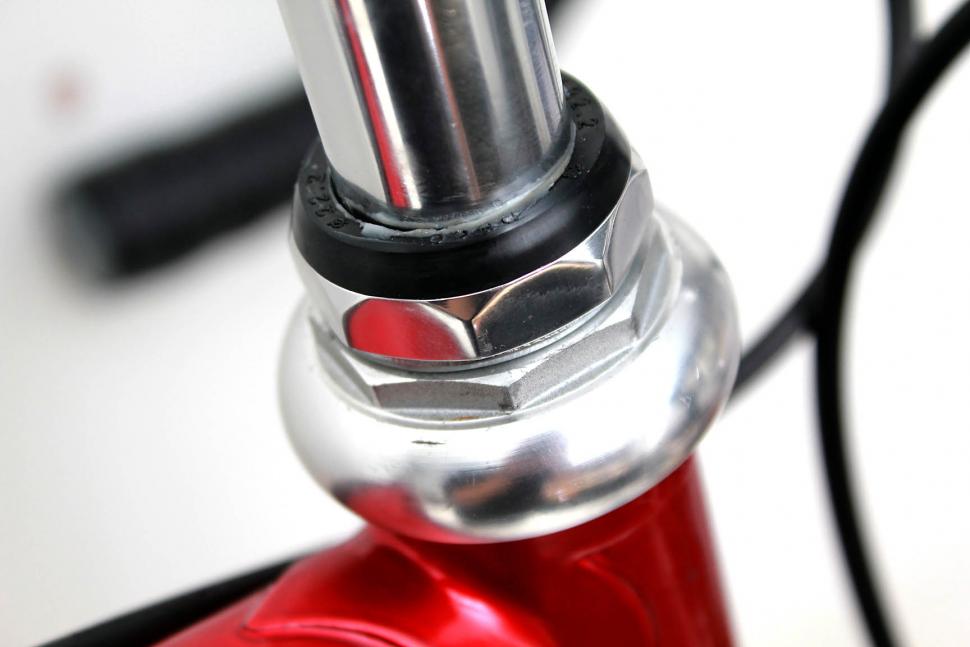
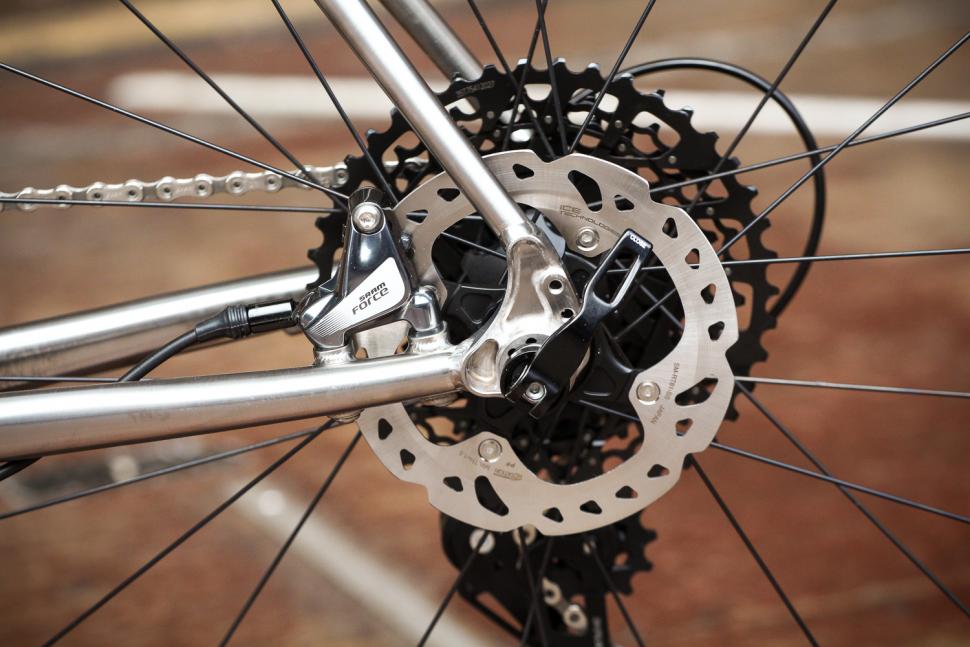
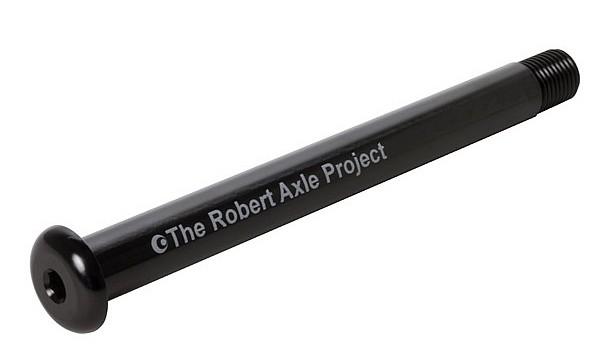
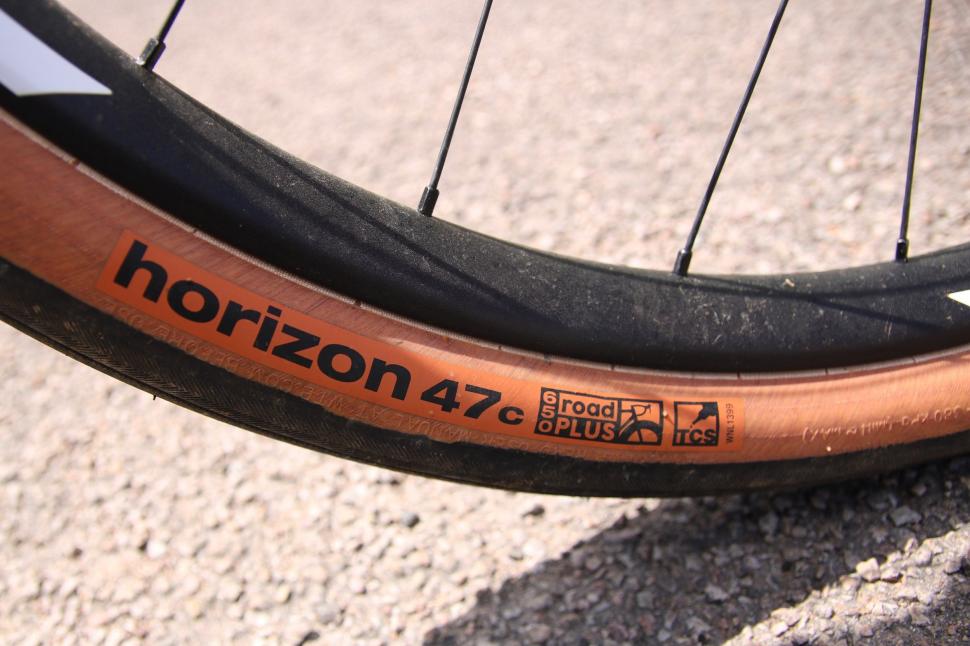
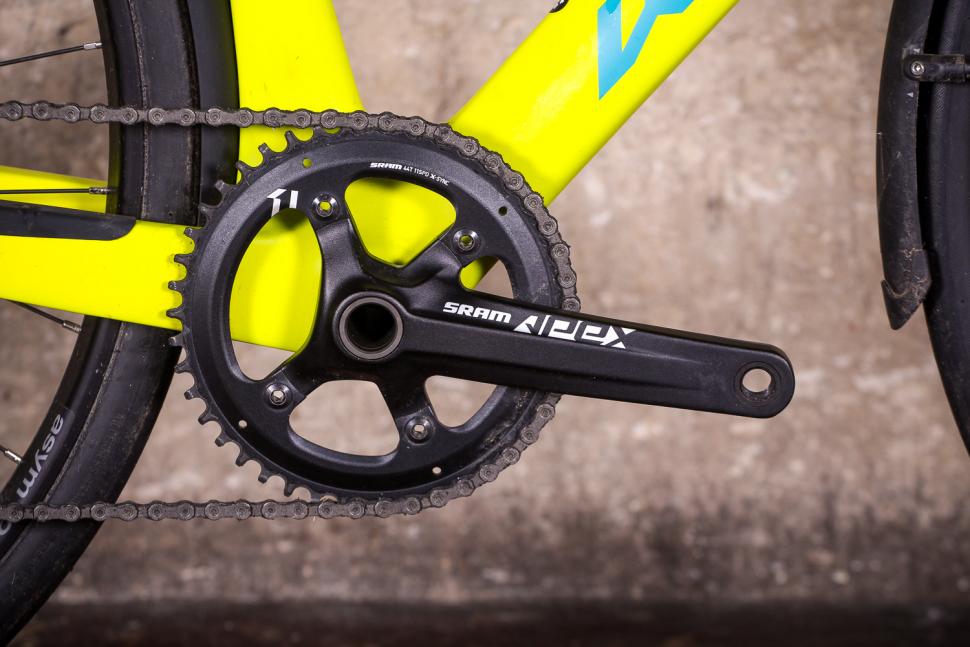
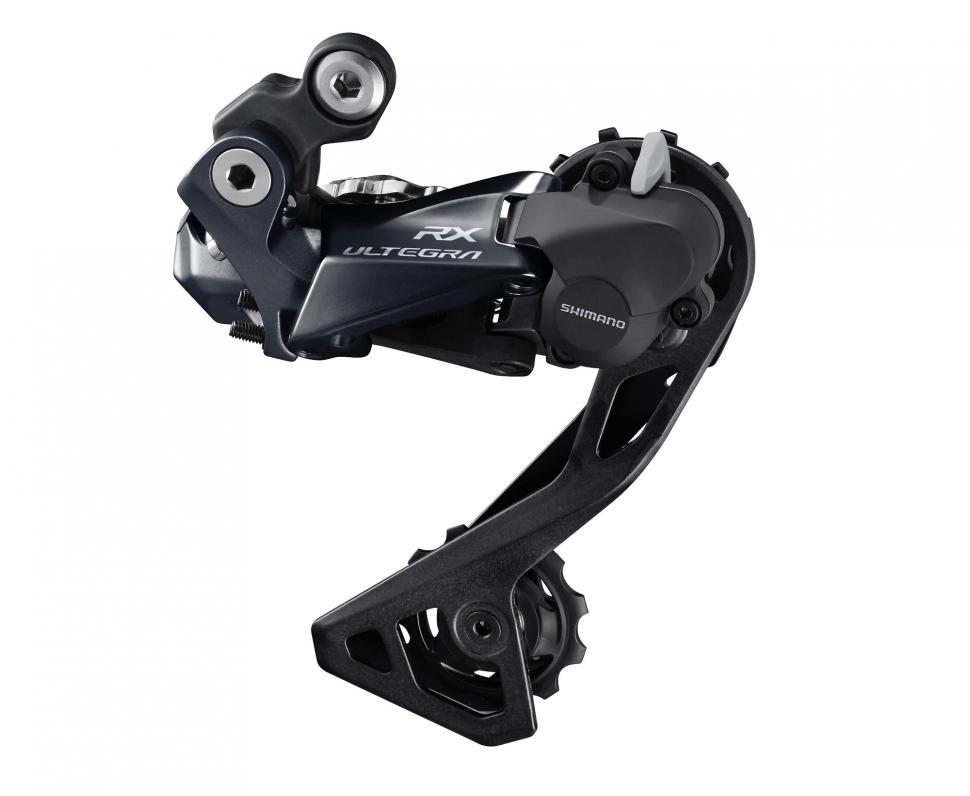


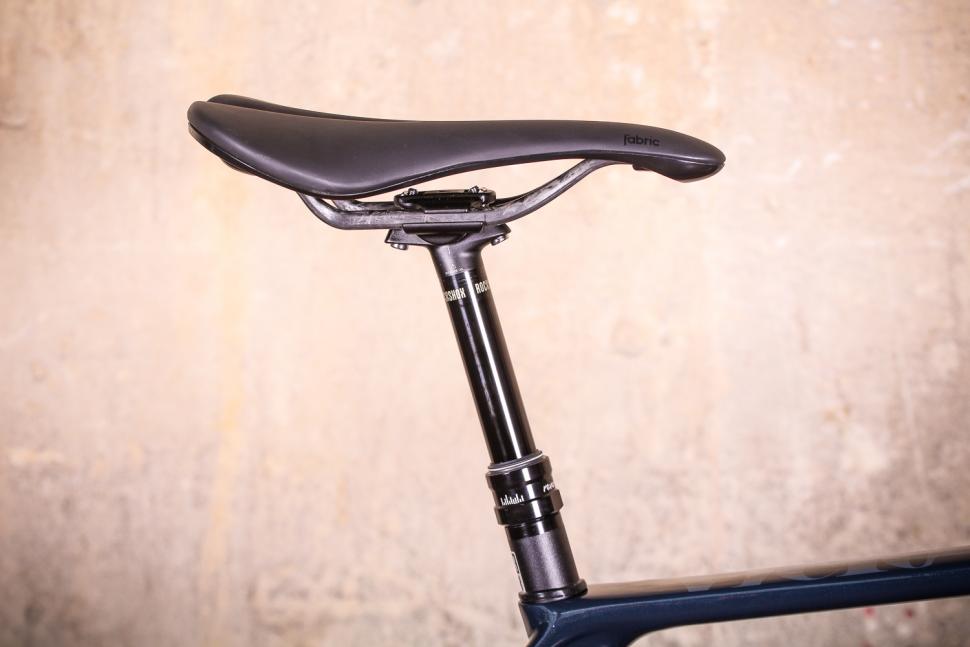
Add new comment
35 comments
With the new UCI regs banning top tube descending, would it be worth (if you could get it by the UCI, obviously) developing/installing a lightweight dropper post for stages with long descents?
It is a generalisation, but where MTB leads, road tends to follow; and they don't have the same 'purist'/historic 'issues' that can be a blight on road cycling....
-
Let's not forget additional gears and wide range cassettes. (OK, the latter came more or less along with 1x systems.)
And if you look at the Hope HB.T track bike developed for the Olympic games of
20202021, the boost front axles are surely coming over. Because aero!I tick most of these boxes on my new MTB and its a revelation.
My cheap TRP hydros are incredible compared to the cable discs I had on my gravel bike.
Dropper post has given me a much more flexible pedalling position - I now want a short drop one for my road bike. The older I get the less flexible I am and this would really help with staying seated whilst stopped at traffic lights.
Tubeless, jury is still out for me. Although I did end up fitting my Roadplus Sendero 47mm tyres to my MTB just because they're the only tubeless tyres I own at the moment. Quite interesting running such skinny rubber on a long and slack modern MTB.
Clutches and 1x. Initially I was dead against going 1x because I worried I'd lose on-road speed but having had a nightmare with chain drops on the double it came with I'm a complete convert. Deore M5100 (once it's back in stock) is a great rival to Eagle NX. Around £150 to upgrade and that's not including selling whatever it replaced on your bike.
I think they forget the resurrected Flexstem that belongs on this list
https://www.mbr.co.uk/news/suspension-stem-356832
"And it’s increasingly common on road bikes. Both the 3T Strada and Whyte Wessex One are designed entirely around a 1x drivetrain, there’s no way of fitting a front mech. The 3T Strada is even being raced in the professional peloton. "
Which did not end well with the riders eventually slagging 1x off.
Havee you got a link to that...I'd like to read their views as I've been on a Wessex One for nearly two years. Upgraded the stock drivetrain to a SRAM AXS eTap 1 x 12. The original gearing was too high and gappy but going to 12 helps and electronic just munches the miles. Will happily part with ££ for a Strada frameset to swap the electronic groupset onto.
Merlin have some deals on the 3T Strada at the moment. I'm very tempted.
https://www.merlincycles.com/3t-strada-team-force-axs-etap-aero-road-bik...
'Developed by John Rader and produced by Dia-Compe as the Aheadset'
And they copied that idea from Pace's RC100 Mountain bike. Dia Compe folk were seen sniffing around this innovative bike a year or so before they 'invented' the aheadset.
I like thru axles. I've been whacking the bike in the car, front wheel off recently, and, to me, thru axles just feel that bit easier. That may sound counter-intuitive but mine are wind up so there's no, is the QR tight enough, adjust a bit faffery.
Smashed out a quick 35 miles this morning on my Cannondale Slate, which has practically all of the features mentioned above. The whole ride was on the road and I would guess that I would only be 2-3% faster on my carbon road bike.
I've had this bike for about six months now and it always puts a smile on my face - I doubt I'll ever get rid of my road bike but the Slate is my winter/gravel/bikepacking ride and is remarkably versatile and comfortable.
Mixing the elements of road and mountain bikes has IMO resulted in some very comfortable, capable and still pretty bloody quick bikes - what's not to like.
My memory is a bit hazy, where do these have their backgrounds, road, mountain, or both?
135mm rear spacing. I guess road is still at 130 for rim brakes, so this sounds like a mountain bike background.
Oversize bottom brackets and outboard bearings. My guess is mountain biking again because wider spindles (73mm bottom bracket widths and greater) would need to be oversize to retain the same stiffness.
31.8mm bars. Maybe removeable stem faceplates are somewhat related. Obviously, removeable faceplates already existed on stems (see: BMX stems), but which other camp adopted them first and started widely using them?
I don't think I've seen 135-mm on rim-brake road bikes, but it was used on quick-release road discs until those were overtaken by through-axles. And through-axles have always been either 135 or 142 (which is really the same as 135 with shoulders).
ISTR the whole 700/650 a/b/c sizing system was a throwback to racing fixed gear bikes when they wanted to make the gearing equivalent. Rather, have the same gear inches so no one had a gearing advantage. Standardize on a wheel outside diameter and allow different tyre widths by changing the rim diameter so the overall wheel diameter was constant.
Back then, when you had glued on tubular tyres, there was no such thing as a bead seat, especially on wooden rims. Obviously, transitioning to clinchers caused many legacy issues, and ignoring bits and pieces of the old "standards" didn't help.
Where am I going with this? Just that wheel sizing is convoluted because of different standards in different countries long ago. Not nearly as straightforward as the apocryphal background of rail gauge being the width of two Roman horses' backsides.
It's the old French sizing system. https://www.sheldonbrown.com/tire-sizing.html
Windbag, so making fairly obvious comment about things is negative and is ignorant inverse snobbery, fucking comedy gold. You can't even make points to argue against what I said, just throw insults.
What a loser
Bring back ye olde:
* 27 X 1-1/8 (Width = 28mm)
* 27 x 1-1/4 (Width = 31 mm)
* 27 X 1-3/8 ( Width = 35mm)
and! a 'better rolling wheel'
Interestingly, I first had disc brakes on a NZ-made Healing Lo-line Cruiser ( Raleigh 20ish thing) in 1974 when I was 10. They weren't up to much, but they were there on the back wheel. I thought they were the absolute duck's guts.
My point was we already had two perfectly good wheel sizes that already existed that could be used for the roles 650B are being touted as, that being 559 and 571, there was no need to reinvent it.
Aye, there are alternatives - i'd guess that the main reason people are going for 650B is that currently there is a very large, pre-existing manufacturing and design resource for it due to the popularity of 650B/27.5" in mountain biking; using another size would necessitate somewhat more re-designs and re-tooling (there will be some anyway, but I doubt anywhere near as much).
There is another point, which has been mentioned before, regarding the OD of the tyre and wheel as a whole. If you take 700C wheels and say they're typically used for 20-30mm tyres, and use 30-50mm tyres for roady-off-road/gravel/adventure/whatever then 650B is a good match for the type of riding and tyre size that it's getting used for in the sort-of "off-road but not full MTB" area. 650A is pretty decent too, 650C close-ish but a bit more variance and 26" not as much use unless you want to change the geometry/clearance of the bike more, e.g.
Type OD Tyre . Total OD
26" 559 30-50 619-659
650 597 30-50 657-697
650A 590 30-50 650-690
650B 584 30-50 644-684
650C 571 30-50 631-671
700C 622 20-30 662-682
Reigniting the old 650B reflects a lot of what is happening in the bike industry, creating something simply for the sake of selling more. It means you have to buy a new bike/frame, 559 or modern 26" if you will, is not much different to 'road' 650C/571 which again is virtually no different to 650B. So the wheel sizes already existed and there was nothing actually wrong with either of these sizes for road/off road and everything else inbetween. it's pretty much the bottom bracket changes all over again.
They both gave a smaller/lighter wheel and it was the actual outside diameter of the tyre that was the defining factor in terms of size, yes a wider rim makes fitting/using wider tyres easier but even a 13mm internaI bead can be used for a 32mm wide tyre.
I used 559-40 Continental Goliath semi slick tyres BITD and they were brilliant, they also made a 45mm variant I also had a Muddy Fox hybrid that could take 700x50mm with ease. All that has happened is that manufacturers want to shift more product so they 'reinvent' a product and tell bike/product promoting sites like RoadCC that this is the latest thing and bamboozle the suckers, sorry I mean testers into beleiving these are the latest, greatest thing, all that's really changed is some material changes in frame tubes/design and tyre tech has moved on and with a lot more choice in sizes and indeed budget.
Specialized used to fit their 'Globe' models (circa 2007 on) with a flexible sidewall 42mm slick tyre that was fantastic and gave a very good speed/comfort trade off but again repeating what had already being around in my lifetime from almost 20 years previous.
There's a heck of a lot of rehashing and/or superfluous kit for road bikes, even ones used for off road.
Marketing aside, 650b makes a lot of sense off-road, and if you have a frame that will take that and 700c - something that is increasingly easy with discs - then you can have a lot more flexibility and options. Sure, this is in many ways harking back a few decades to when a lot of bikes could cope with wider tyres, but moves things on as well IMO. A decent 650b wheelset can give you a more robust and wider rim more suited for off-road and rough terrain without the bulk of a 700c rim trying to do the same job. Also while you can put a 32mm tyre on a 13mm internal rim, if you spend any time off-road you almost certainly wouldn't want to for a number of reasons.
Yep - that's something we can agree on for sure...
You do seem to love winging, and also have a fairly blinkered view.
Firstly, 650a, 650b and 650c are different. What can often make them similar is the overall diamter once a tyre is fitted - much like 650b is the same as 700 if one is fitted with 50mm and the other 30mm tyres. However they will ride very differently, as that 20mm difference in width adds a huge amount of volume.
26" became popular not because it was the best wheel size for the job, but because it was the wheel size that was easily available to the early mtb pioneers.
Then a number of people stepped back and went 'hang on', why are we using 26" wheels. But sticking MTB tyres on 700c rims (29er) causes geometry issues that designer are only just getting their heads around, and people of short stature like myself find bikes with 29er wheels harder to manouver, so that's why someone had the brilliant idea of sticking an MTB tyre onto a 650b rim.
Yes, OK, calling it 27.5 is definately a marketing gimmick, but the princple behind the wheel size makes sense.
Yes, again, it's taking something old and 'refreshing' or 'rebranding' it as something new, but actually 650b in mountain biking terms is relatively new, because previously there wer few if any tyres of 60mm+ width for that rim size.
As for there being nothing wrong with 650c, 559, etc for road or off-road use, again, yes, but that's not the question. The question is are they the best solution to the problem, and it seems not (particularly for 559).
As for 32mm tyre on a 13mm rim - yes it would work, but the point about wider rims is that you end up with less of a bulb shape, so the tyre rolls less on the rim, which is important if running lower pressures aloud by running tubeless - again, sound design principle.
Finally, just cause you don't like all the new old stuff - or maybe don't get it - doesn't mean others don't. You keep your money, and carry on riding whatever bike you have with whatever wheel size it has and enjoy. No-one is forcing you to 'upgrade'.
Joules meet BehindtheBikeSheds, the most retro-grouch wind-bag on the whole site. Generally best try avoid getting caught up in his brand of negative and often ignorant inverse-snobbery, but we've all taken the bait once or twice before realising there is simply no point. Life's too short etc.
Bother to read dear boy, my post clearly states the differences in sizes between the 650A/B/C.
I also mentioned that you can fit a wider tyre on a narrow rim as a point of reference and part of a point, it's not perfect but it works and if you're more bothered about looks than functionality that's your problem. I've used it on my commuter loaded up, it worked, it meant I didn't have to buy a wider rim, was it ugly, maybe but that doesn't matter does it.
I never once stated that the width isn't a factor, all the rims can be made wider to be suitable for wider tyres, that's not in dispute, nor did I say this wasn't the case, again, you're not able to comprehend basic English.
I said that the existing sizes like 559 and 571 could have been used and I gave examples with the Goliath tyre which was up to 45mm wide yet in essence a comfy road tyre you could use off road, which is exactly what the 650B is mainly being touted as. The only difference is that tyre availability is massively more nowadays, finding either a good quality narrow and/or slick wider tyres for 26" in a wasn't that easy and they were relatively much more expensive.
There was simply no reason to change back to an older size or invent new sizes when the sizes we had were just fine, 559/571 for either smaller frames and/or a wider and due to the smaller circumference, stronger wheel for same weight. And again the 622 is fine, just wider rims to accept wider tyres afterall that is what a 29er is anyway.
instead manufacturers have invented/reinvented the new sizes and said we now need new bikes/frames to be able to use these wheel sizes and they are going to be more beneficial when in fact it was lack of tyre options, manfacturers reluctance to produce wider rims in the sizes that was the restrictive factor plus of course frames that would not accept wider tyres anyways.
That is all down to marketing and selling more stuff NOT about making things better, more choice in the wheel/tyre sizes would have resolved that problem without needing to force people to change frames/buy new bikes/new wheels and make it more complicated just as has happened with bottom bracket types.
The issue isn't really about which one wheel size to use for a bike but the ability to use more than one size on one bike to suit the conditions, and to do so in a way that limits the change in the characteristics of the bike. Also, 650B is as valid a size with similar history to 650C and 26", so no re-invention, and it has the advantage of much greater availability, price and choice over the others. I thought i'd covered that in my reply further up with OD measurements, was there something there that you disagreed with ?
Mate, you're not as bright as you think you are. Maybe the reason people often don't seem to comprehend you is because you're not very good expressing what you think you know.
Somehow I don't think BTBS/CIBM will be replying.
Headsets and brakes are the only one most people will get any benefit from. If you've got a road bike chances are you ride roads so thru axles, 650b wheels, wide tyres and 1x drive trains and clutch derailleurs probably aren't really necessary and everyone got along quite nicely before 'the industry' decided n+1 needed a shakeup and we all need a gravel/adventure bike in the garage.
Just put slicks on the MTB and lock the forks.
Pages